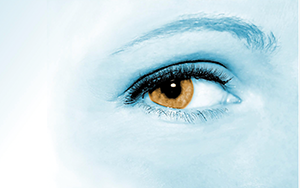

During my training courses on CCTV body language and crime behaviour analysis, I have continually had different and new insights during my interaction with delegates on the different courses. It is one of the dynamics that make training such a fulfilling role – you never stop learning yourself.
I also come across some delegates who are simply outstanding in their ability to understand and apply the concepts, or who identify potential suspects through a natural feel for criminal behaviour. Early on in my training design, I thought that the concept of how operators used cameras was an essential area to cover, to complement the reading of body language and crime detection. This decision fulfilled itself almost immediately when I did some training for a diamond mine in Yellowknife in Canada.
One of the operators showed an excellent feel for the concepts I was talking about when discussing cameramanship. It turned out that he was a semi-professional cameraman who took photographs of various things, including scenery in his spare time. It resulted in him sending me some amazing photos of the area around Yellowknife just south of the Arctic Circle. It also highlighted the fact that people with these kinds of skills could apply them to CCTV very successfully.
In other courses round the world, I’ve had subsequent exposure to those who take photographs or videos as part of their interests, or to help make a living and they have reinforced how knowledge of photography plays a role in delivering high quality CCTV coverage.
In one instance in Sydney, a delegate who was an extreme movie fanatic (he had seen just about every movie I knew of) showed similar awareness and other delegates who were fans of particular artistic film directors have also shown good appreciation for getting the right picture. In my training with Super Recognisers in the UK, in some of the courses we have had delegates coming from a background in video editing and creation who also related easily to the concepts expressed on the course.
The fundamentals of pictures
In all of these occupations, the picture composition is critical and a fundamental part of the job (or hobby). Client expectations of service delivery are focused on getting this aspect of the work experience right. It means that these skills roll over very easily in getting high quality CCTV coverage naturally as part of their work operations. If we look at what is required from photographers or video operators when viewing scenes, things like composition, balance, understanding of light and shade, an eye for detail and placement and arrangement of visual elements are all factors that are fundamental skills.
For many people in these operations, skills in interacting with people and effective communication, asking the right questions, listening effectively and an understanding of clients’ needs and expectations are required which allows them to deal more easily with people. Add in patience, keeping calm and handling pressure and it makes qualities that are well suited to a control room operator.
One of the success factors in getting good coverage of the dynamic changes during a crime (or other) incident is the anticipation of behaviour and where people are going and what they are likely to be doing. Even in still photography, an appreciation of body language, posture and attitude is key to successful photos involving people. Those who are naturally interpreting and automatically anticipating this behaviour are going to be ahead of those who don’t.
This anticipation of behaviour is also something that I emphasise in the training as it leads to more successful detection and better quality CCTV footage. Combine this with the use of conceptual skills like using perspective, framing and analysing the components of the picture in order to get
the best view and context and the person’s skills can be naturally applied to CCTV PTZ use. That is why, when I do my crime behaviour analysis and CCTV training, I focus not only on the detection of the body language, but also on aspects of evidence collection and use of cameras.
The right perspective
If I do a human factors audit of a CCTV operation, I look at the operators’ knowledge of camera locations and numbers and complementary or overlapping camera views. Their choice of an appropriate camera view has similar importance as the photographer, although the CCTV operator may only be able to use fixed or static cameras. This knowledge of camera views on the site can easily be obtained by reviewing cameras and practicing the tracking of targets through the different areas on site.
The abilities I’ve mentioned that photographers and video operators have are also not necessarily something that is restricted to those with professional experience. Some people are using their natural conceptual and composition skills to do the same thing in CCTV control rooms. One operator who had been working for only two weeks captured an incident of drug use in a casino almost perfectly, with great composition, placement of camera views and collection of the essentials of evidence required for successful prosecution.
A few years ago, some inmates in a South African prison produced a video to highlight internal prison conditions, which also showed excellent photographic awareness of key factors in producing video.
Despite their skills, it also doesn’t mean that photographers are good at crime behaviour detection. No matter how good they may be at taking wedding photos, a photographer’s awareness of crime may be terrible unless they typically work in high-risk environments and have a strong risk awareness. However, whether it is people who capture and process images for a living, those that get excited by doing it in their spare time, or those that bring natural skills into the control room, what they have in common is a feel for the context of the people involved and their positioning, the body language being displayed and the environment perspectives.
Getting images that count
A few years ago, there was some discussion in the UK press and users that indicated that approximately 80% of CCTV evidence material supplied to one of the UK police forces was not suitable as evidence in any proceedings. With improved standards and camera capabilities, this must have improved significantly, but I still frequently come across situations where the video quality falls short of what would be expected in any legal proceedings.
Where this is because of the positioning or the type of fixed camera, this cannot be seen as a shortfall in operators’ skills (although it may be the case in scenarios involving tracking or pursuit failures). However, operators having access to PTZs have a unique opportunity to leverage the technology to improve the video footage acquisition and make it of a high quality.
This balance between fixed and the use of PTZ cameras needs to be discussed with operators and made part of the surveillance strategy for those in the control room. Use of a PTZ camera can greatly enhance the quality of evidence, or can simply kill it by poor camera usage. Most importantly, while you can get a benefit from having people in the control room from backgrounds where they can leverage camera skills, all operators can benefit from training in camera usage, crime behaviour and evidence collection to increase detection rates and to enhance the evidence quality of CCTV footage.
About Craig Donald

Dr Craig Donald is a human factors specialist in security and CCTV. He is a director of Leaderware which provides instruments for the selection of CCTV operators, X-ray screeners and other security personnel in major operations around the world. He also runs CCTV Surveillance Skills and Body Language, and Advanced Surveillance Body Language courses for CCTV operators, supervisors and managers internationally, and consults on CCTV management. He can be contacted on
| Tel: | +27 11 787 7811 |
| Email: | [email protected] |
| www: | www.leaderware.com |
| Articles: | More information and articles about Leaderware |

© Technews Publishing (Pty) Ltd. | All Rights Reserved.